Emergency transfer moves sound last ditch, unprepared and done in haste. And frankly, to a certain extent that is the case. But in a football world where deadline days are celebrated (earmarked as yellow tie day by some) you cannot but wonder at how closely the entire European football industry focuses on the deadline day.With clubs looking at all the permutations and combinations before getting down to the business, it is common knowledge that the majority of the business in a transfer window happens at the eleventh hour nowadays. Thus, a lot of transfers appear to be emergency moves, although they actually aren’t.The success of these emergency purchases is questionable, case in point being Kim Kallstrom’s move to Arsenal last January, as he was literally airlifted from his holidays in the Middle East to provide some experience in midfield for Arsenal. But, he was sidelined as soon as he signed on the dotted line for the Gunners. So, decisions that are made in a hurry, do not always result in the best signings.However, time and again, we have seen that some of these contingency transfer dealings have borne fruits. Here’s a look at some such deals:
#5 Thierry Henry to Arsenal
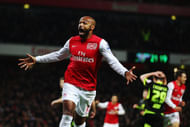
Thierry Henry initially came back to train with the Arsenal squad so as to work on his fitness during the MLS off-season. Arsenal were on the lookout for some attacking options as the African Cup of Nations had depleted their squad. While people labelled this as a classic case of another shrewd Wenger buy, it was far more than that.
What makes this emergency transfer feature in this list is more related to the positive impact and overall lift that Henry's comeback gave the team. Nonetheless, scoring two goals, that too two match winning goals, in half dozen or so games on his return, does do some justice to his selection.
Moreover, it was always known that when Wenger went on to sign Henry for the second time, it was for his experience and his persona and not for those scintillating vintage Henry runs and finishes. It was not the showstopper Henry that people expected to see (though old habits do die hard), but a rather Sensei-ish Henry who took to the pitch this time on, as he helped out his young team, giving them a pillar to lean against for support.
Fans at the club will always be star-struck at the sight of the French World Cup winner, but the goal he scored against Leeds United in the FA Cup, was evidence enough on how having 'Titi' back at Arsenal lifts the atmosphere. It will always remain a special transfer for both the player and fans.
#4 Henrik Larsson to Manchester United
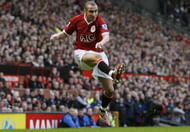
Larsson was the original Swedish star, long before Zlatan entered the fray. The striker was always known for his goal scoring abilities, having made his name with Celtic. So when Manchester United went out, partly forced by the injury issues to Louis Saha, to secure the Swede's services, it was his ability despite his age that brought him to Old Trafford.
While many were sceptical about how a 35-year-old playing in the Swedish league would settle so quickly in the Premier League, he was able to maintain his goal scoring prowess, scoring three times during his brief tenure.
Signed from Helsingborg on a three month deal, he came to United following his spells at Celtic and then Barcelona, with whom he won the Champions League. Larsson was able to garner a cult following for himself in Manchester as well, making a great impact during his short stay.
This was an emergency move that suited all the parties involved. The Swedish off-season continued till March, making this viable for the striker while United were on the lookout for a stop-gap striker for the short term.
While it ended on a happy note for all parties involved, the fans were left wanting some more of the Swedish striker, who had effortlessly become a crowd favourite. Later on, both Sir Alex Ferguson and Larsson stated that they rued their inability to extend the deal, and so it remains a pleasant “what if” story for all the faithful Mancunians.
#3 Sol Campbell to Arsenal
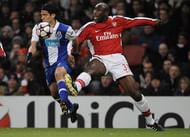
Very much like the current season, January of 2010 saw Arsenal facing another injury crisis. With the first choice centre backs Thomas Vermaelen and William Gallas, both susceptible to injuries, it was seen as prudent to sign a backup defender.
Incidentally, Sol Campbell was working on maintaining his fitness along with the Gunners’ squad after becoming a free agent, but it was never seen as anything more that that. As time elapsed and injury gods continued unleashing their wrath on the club’s defenders, the move was one that made sense. At 35, Campbell was no doubt, not at his best, but was able to lead the defense nonetheless, bringing all his “Invincibles” experience into play.
Playing more than a dozen games in his six months, Campbell was able to provide great cover for the regular defenders and scored a vital Champions League goal for Arsenal as well. He was not only great cover for the defence during his second stint at Arsenal, but was also an influence in the dressing room, and was able to make his case to clubs across the league for another innings at the top level, as Newcastle United signed him that very summer.
#2 Diego Lopez to Real Madrid
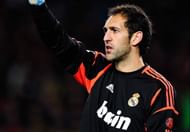
Real Madrid were sweating it out when they got to know that their captain cool Iker Casillas would be injured for a considerable period in the middle of the 2012-13 season. However, given their financial muscle, Madrid hardly fret over injuries and they showed the same in January that season.
Signing Diego Lopez from Villareal in a jiffy was their response. He was initially looked upon as a stop-gap signing, but eventually turned out to be a crucial player for them. Lopez, an ex-academy player for Madrid was able to show his worth during his second homecoming as he utilized the opportunities he was given, impressing the Portuguese boss, Jose Mourinho in the process.
By the time Casillas had recuperated from his injury, he had been displaced by the lanky Lopez as the number one goalkeeper. This was seen as a major blow to Real’s golden boy Casillas, who had till then never had to fight for his place in the first team.
The Spanish number one was relegated to the bench, and experienced a hit in his form as he was unable to make a case for himself. Lopez, on the other hand, continued to lap up the opportunity, playing the best football of his life. While the debate over Casillas' class and Lopez's form raged on even after the 2012-13 season, the former was still not deemed good enough to take his spot back, playing just the European and domestic Cup games.
Lopez was ultimately sold as Madrid bought Keylor Navas, as many, just like Diego Lopez, believed that it should have been Casillas, who should have been sold, going by his performances.
#1 Edgar Davids to Barcelona
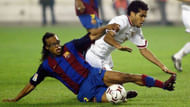
The 'Pitbull' was signed by his compatriot Frank Rijkaard in the winter transfer window of 2003-04, when he was feeling the heat at the Camp Nou due to the club’s very patchy results. He decided to add some muscle to the Barcelona pass and move style in the form of Davids and it worked wonders as Rijkaard then went from strength to strength at the club.
Life was always not rosy for the Dutch manager, who later went on to restore Barcelona's lost glory. Under Rijkaard, they had a troublesome start, despite securing the signature of Ronaldinho. As they languished to stay near the top four in La Liga, doubts soon started creeping up and the manager acknowledged that he needed some steel in his team. And that's when Barcelona acquired the spectacled beast.
At 31, Davids was just another player for Juventus, so they were happy to send him on a five-month loan to Barcelona. Despite his age, he was seen as a player who would, with all the Dutch contingent, hit the ground running and provide some much-needed tenacity in the middle of the pitch. And that's exactly what he did.
In retrospect, he was what Makelele was to Madrid and Chelsea (and what Matic might be for the current Chelsea team). His efforts helped the team arrest their slide as they steadily climbed up the table and ended the season in second position. That season went on to lay the ground for future Barcelona teams that ruled the roost for the next decade or so.
